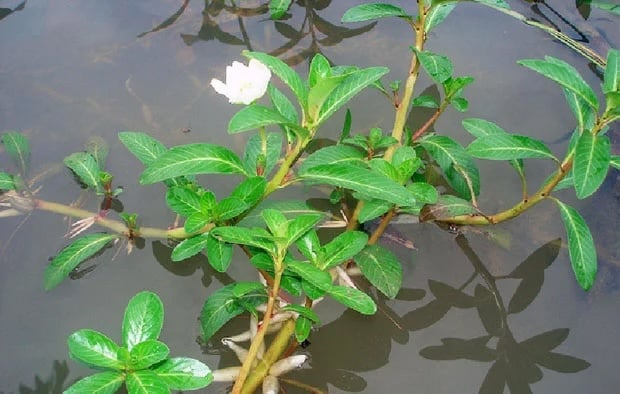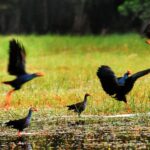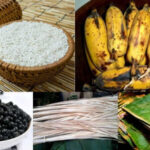The Floating Water Coconut Vegetable of the Mekong Delta: A Seasonal Delicacy
The annual flood season in the Mekong Delta, from July to November, brings not only a bounty of produce but also a proliferation of wild vegetation, giving rise to unique and delectable specialties. Among these, the water coconut vegetable, or Jussiaea repens oenotheracene, stands out for its intriguing characteristics.
Also known as du long thai, thuy long, rau dua trau, and rau muong bo, this versatile plant can thrive in both arid lands and flooded areas.

Water Coconut Vegetable, a Delicacy by Many Names
In terms of form, the water coconut vegetable is a herbaceous plant with numerous slender branches. Its stem is cylindrical, soft, and segmented. The leaves are long and oval-shaped, growing alternately with a rounded base and glossy surfaces.
In Vietnam, this vegetable is found in all three regions, but it flourishes most prominently in the Mekong Delta. Locals share that it typically grows in flooded areas such as ponds, lakes, and rice fields. Notably, the plant possesses small floats along its stem, enabling it to stay buoyant on the water surface. During the rainy season, the water coconut vegetable experiences rapid and robust growth.
Historically, water coconut plants used to grow densely and were considered weeds by farmers, often uprooted or fed to livestock as they competed with rice crops. Only a select few were harvested by locals for simple meals, serving as a source of nourishment during challenging times.

Once Considered Weeds, Now a Coveted Delicacy
Recently, the water coconut vegetable has gained popularity as a sought-after specialty in cities. It can be prepared in a variety of ways, including boiling, stir-frying, or dipping in hot pot. Ms. Thanh from An Giang shares that dipping the vegetable in fermented fish sauce enhances its crispness and blends perfectly with the sauce’s robust flavor, making it addictive to many. While it may have a slightly pungent taste and a ticklish sensation on the first try, this vegetable offers a delightful and refreshing experience once you acquire its taste.
Ms. Thanh also mentions that locals can distinguish between two types of water coconut vegetables: the “rice” variety and the “buffalo” variety. Although both are edible, the “rice” type is generally preferred for its milder flavor, while the “buffalo” variety has a slightly bitter taste.
During the flood season, Mekong Delta residents actively harvest water coconut vegetables for sale. With its potential for generating income, many families have started expanding their cultivation of this vegetable.

A Seasonal Harvest Turns into a Lucrative Enterprise
According to surveys, water coconut vegetables are relatively inexpensive in local markets, but their price can soar up to 80,000 VND per kilogram on e-commerce platforms and specialty vegetable stores. Despite the higher price compared to common vegetables, it remains in high demand due to its exceptional taste and safety profile, free from chemical residues.
In restaurants and eateries across the Mekong Delta, the water coconut vegetable is transformed into a myriad of delicious dishes, including raw salads, boiled vegetables with fermented fish sauce, herb salads, hot pots, stir-fries, and additions to iconic dishes like bún riêu (vermicelli soup with crab) and bún mắm (vermicelli with fermented fish sauce).
Beyond its culinary appeal, the water coconut vegetable offers health benefits as well. In traditional medicine, it is believed to have a sweet and淡 flavor, a cooling nature, and is used for heat dissipation, detoxification, diuresis, and reducing edema.
The Captivating West Mekong Crape Myrtle: Unveiling Its Origins, Unique Characteristics, and Cultural Significance
In this article, let’s delve into the enchanting world of the Western O Moi flower. Native to the lush landscapes of Vietnam’s Mekong Delta, this floral beauty holds a special place in the hearts of the locals. With its vibrant hues and delicate fragrance, the O Moi flower has come to symbolize the unique culture and natural splendor of the region. Join us as we unravel the fascinating tale of this flower, exploring its origins, distinct characteristics, and the profound significance it holds for the people of the Western lands.
Exploring Duyen Hai (Tra Vinh): 5 Must-Visit Spots
Duyen Hai is a renowned tourist destination in the Tra Vinh province of Vietnam, offering a plethora of attractions for visitors to explore. Discover the top 5 must-visit locations in this charming coastal town, each boasting its unique beauty and allure. Uncover the secrets of this captivating region and immerse yourself in the local culture, natural wonders, and historic gems that Duyen Hai has to offer.
Where to Buy Delicious and Affordable Banana Sticky Rice Cakes in Saigon?
This weekend, we were craving a traditional Vietnamese treat – banana sticky rice cake (*bánh tét chuối*). Instead of wondering where to buy this delicious treat in Saigon, we decided to take matters into our own hands and create a comprehensive guide to the best places to satisfy your *bánh tét chuối* cravings. Get ready to indulge, as we take you on a tasty journey through the city’s best spots for this beloved dessert!



































